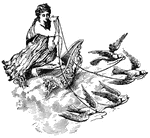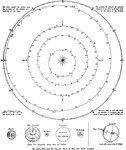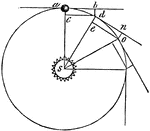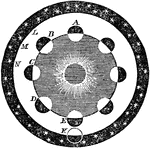Clipart tagged: ‘Venus’
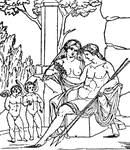
Adonis and Venus
Adonis was loved by Venus. When he was killed by a wild boar while hunting, Venus changed his blood…
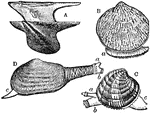
Forms of Bivalves
"Several Forms of Bivalves. A, Avicula; B, Pectunculus, with extended foot (a); C, Venus, with respiratory…

Coin of Cypress
A coin of Cypress, representing the temple of Venus. It shows that she was worshiped in this island…

Coin of Paphos
A coin of Paphos, now Baffo, in the island of Cypress. It shows that Venus was the deity worshiped there…
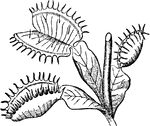
Dionaea
"A very curious and interesting genus of plants of the natural order Droseraceae, having a 5-partite…

Elliptical Orbit
"The elliptical circle being supposed to be the Earth's orbit, with the Sun, S, in one of the foci.…

Venus' girdle
"The most singular of the Callianiridae is the Venus' Girdle, Celestum Veneris, which…

Medal of Dor
A medal showing Astarte on one side, who was worshiped in Dor as the principle of fertility. The other…

Medal of Gaza
A medal of Gaza, representing the turreted head of a goddess, Astarte; on the other side of the medal…

Planet Distance
"Relative distance of the Planets. Having now given a short account of each planet composing the solar…
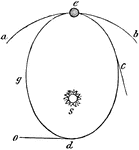
Planet Motion
"Elliptical Orbits.—It has been supposed that the Sun's attraction, which constitutes the Earth's…

Vase
This vase is sculpted in marble. It has a design of cupid trying his bow in the center of the vase,…
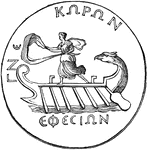
Venus
A marine representation of Venus, the goddess of love and favorable voyages, revered by Ephesus. The…
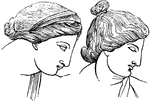
Venus and Diana
"Venus and Diana are generally represented with their hair dressed in the simple style of the young…
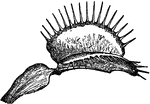
Venus Fly-trap
"Leaf of Venus's Fly-trap (Dionaea muscipula), viewed laterally in its expanded state." — The…

Venus Fly-trap
"Leaf of Venus's Fly-trap (Dionaea muscipula), closed over insect, viewed from the side." — The…
Venus Fly-trap
"Leaf of Venus's Fly-trap (Dionaea muscipula), closed over insect, viewed from above." — The Encyclopedia…

Walnut Street Front
David Rittenhouse erected a temporary observatory for the purpose of observing the transit of Venus…
